After making your way to the Haligtree, there’s only one Shardbearer remaining in Elden Ring. The Lord of Blood waits for you in a hidden place deep underground, and if you venture into those depths, you’ll find a huge world. These subterranean places have their own history with the Golden Order and the Lands Between, and despite their destruction long ago, they’re actually pretty important to the events you see in the world above. Not only is the last Shardbearer hidden here, but we learn some things about the past of the Lands Between, and what impacts the events of the game’s history, like the Night of Black Knives, have had on the world ever since.
The underground world and the Eternal Cities you find there have a lot to do with Ranni and her quests, and it’s here you’ll find out about the ultimate fate of Miquella and Godwyn the Golden. There’s a lot to learn down here in the false night–and even a huge well of Scarlet Rot, the “Lake of Rot,” that might even house the essence of the Outer God responsible for the affliction that plagues Malenia, Radahn, Caelid, and the Haligtree.
Spoilers follow, of course, as we uncover the stories hidden beneath your feet as you venture through Elden RIng.
More Elden Ring story explainers
- Elden Ring Story Guide: The Lore and History of The Lands Between
- What Happens in Elden Ring? The Game’s Story, Part 1: Limgrave
- What Happens in Elden Ring? The Game’s Story, Part 2: Liurnia Of The Lakes
- What Happens in Elden Ring? The Game’s Story, Part 3: Caelid
- What Happens in Elden Ring? The Game’s Story, Part 4: Mt. Gelmir and Volcano Manor
- What happens in Elden Ring? The Game’s Story, Part 5: Leyndell, Royal Capital
- What Happens in Elden Ring? The Game’s Story, Part 6: Mountaintops of the Giants
- What Happens in Elden Ring? The Game’s Story, Part 7: Castle Sol and the Consecrated Snowfield
- What Happens in Elden Ring? The Game’s Story, Part 8: Miquella’s Haligtree
- The Frenzied Flame and the Game’s Bleakest Ending, Explained
The world underground
If you did a lot of exploring in Limgrave, you likely stumbled on the Siofra Well, discovering a huge underground area surrounding the Siofra River. This is your first inkling of the land beneath the Lands Between, and the cities that have been built there: Nokron, Nokstella, and a city that is nameless.
As with a lot of areas in Elden Ring, the fine details about what’s going on with the underground lands aren’t always clear. The open areas themselves are populated by the spirits of Ancestor Followers, which are big, humanoid folks who wear horn headbands. Unlike most of the people you encounter in the game, these creatures seem more linked to nature, the forests, and the creatures who inhabit them, especially because of their proximity to a boss you can take on called the Ancestral Spirit.
The arrows the Followers shoot at you deal magic damage thanks to the fact that they’re said to be imbued with the spirits of small animals, and their use of horns–something we know to be somewhat taboo among the Golden Order, thanks to Omen–all suggest they might be a more ancient people from a time before the Erdtree. The lore on their clothes talks about Erdtree buds sprouting from their flesh or even “their souls,” which also gives the impression that these are folks whose religion is about nature; not just one Erdtree, but all of them, as well as the spirits of people and animals.
The Ancestral Spirit also seems to be from a creature that is perhaps not linked to the Erdtree, but a spirit from the more natural version of the Lands Between from before the Golden Order. Lore linked to the Ancestral Spirit suggests new life springs from death, which sounds pretty far at-odds with the Golden Order version of the world, in which Destined Death is locked away.
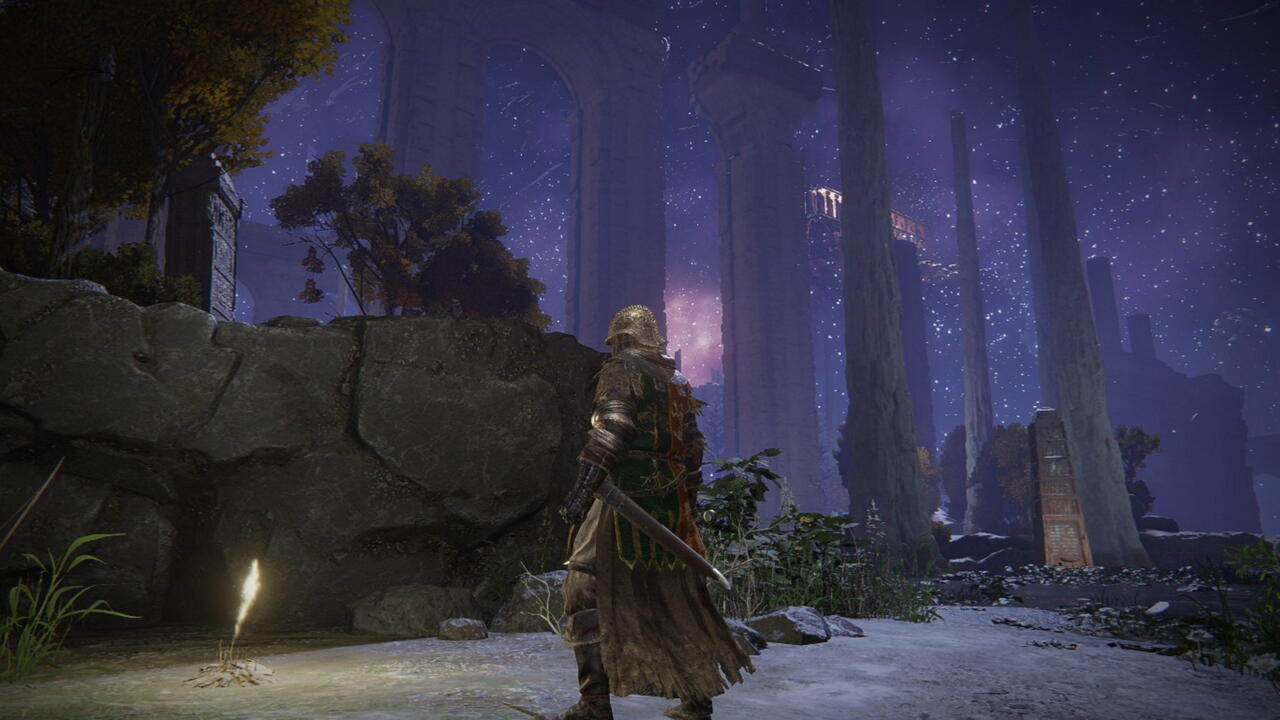
Connected to these areas is the Lake of Rot, a place where you’ll find ruins populated by the creepy centipede pests, the Kindred of Rot, found in Caelid. The Lake of Rot seems to be the place from which Scarlet Rot springs. The Blue Dancer Charm lore tells of a legend in which a blind swordsman sealed away a god “that was rot itself,” and the map for the Lake of Rot suggests that some divine essence is sealed there. Thus, this might well be the location where the Outer God responsible for Scarlet Rot is trapped, although exploring the area, you can’t find out much about it (or do anything about it).
The cities you find underground, however, are not those created by the Ancestral Followers, who “eschew letters and metalwork.” Those were created by the Nox, a group of humans who once went up against the Greater Will–and lost.
Nokron, Nokstella, and the Nameless Eternal City
You can’t reach the Eternal Cities proper until later in the game; in fact, the way to Nokron only opens once you’ve defeated Radahn and released the stars, causing a meteorite to fall into Limgrave and open the path below ground. We know the most about the story surrounding Nokron, although exactly where it fits in the timeline of Marika’s story or the greater history of the Lands Between isn’t especially clear.
The cities of Nokron and Nokstella are still homes to some people, but the two locations have seen significant calamity. From the armor of the Nox enemies, we learn that the Nox people angered the Greater Will in some way long in the past, and for that, the two cities were cast underground. What the Nox did, how exactly their cities were buried, and how the Greater Will was able to enact that punishment isn’t exactly clear. It’s also not clear whether the cities were cast down before or after the people of Nokron attempted to fight and destroy the Greater Will.
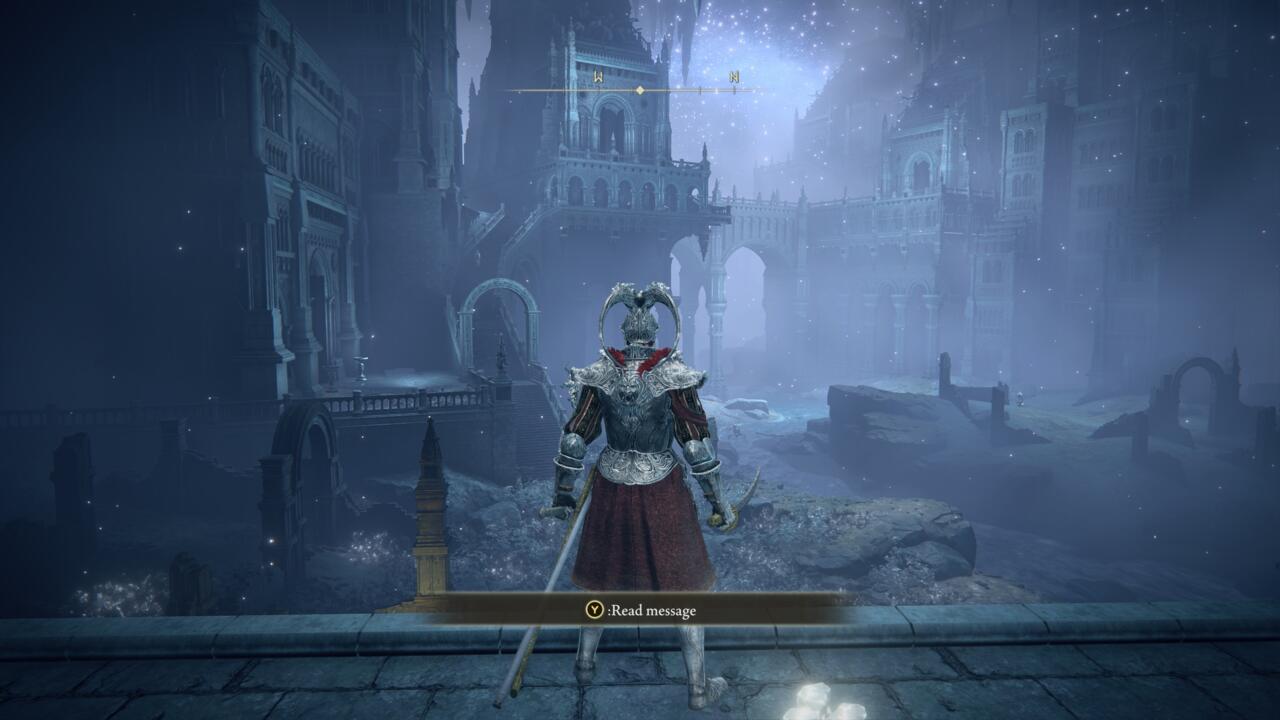
There’s a lot going on with the Eternal Cities, but it’s a little bit mixed up and tough to untangle. At some point in the past, the cities were above ground, and the Nox seemed to be closely tied to the stars. The locations are a big part of Ranni’s storyline, which is also all about fate related to stars and the cosmos. We can gather that the Nox hoped to throw off the control of the Greater Will, and were also trying to reach the same goal as Ranni at some point in the past, enacting an Age of Stars to overtake that of the Erdtree. The Greater Will intervened, however, and they failed.
Nokron and Nokstella are the home of the Silver Tears, as well as the Nox. These are creatures that seem to be made of a living liquid metal, and it seems like the Nox cultivated this substance to create Mimic Tears, which were versions that were capable of mimicking other creatures and changing their forms. When you fight Mimic Tears in the Eternal Cities, they often become humanlike, and even mimic you at points when you encounter them. The substance at the heart of the Silver Tears is necessary for Rennala’s whole weird rebirth thing with her Great Rune, and the shape-shifting substance also seems to have some link to what the sorcerers of Liurnia have used to create the Albinaurics, although the connections are somewhat tenuous.
What we do know about the Silver Tears, however, is that they can become somewhat flawed people-like creatures, and it seems the Nox hoped to use Mimic Tears to “forge a lord.” There’s some suggestion that the Nox might have summoned a meteor, bringing the material that created the Silver Tears to the lands between–and that action might have had some seirous consequences. It sounds a lot like the Nox had hoped to use their Mimic Tears to take over the role of Elden Lord, probably as a means to circumvent or usurp the Greater Will’s control of the Lands Between. We can guess that this might have been what made the Greater Will angry enough to lay the cities low, sending them below ground.
This was a pretty rough situation for the Eternal Cities, as the stars were a huge part of life for them, and they were now subjected to the “false night” of their underground world. The timeline of this is a little rough, but it seems like the rebuke by the Greater Will drove the Nox to find another way to fight back against the Greater Will. If you work through Ranni’s story, you’ll find the “hidden treasure” of Nokron: a dagger called the Fingerslayer Blade. You can probably guess what it does.
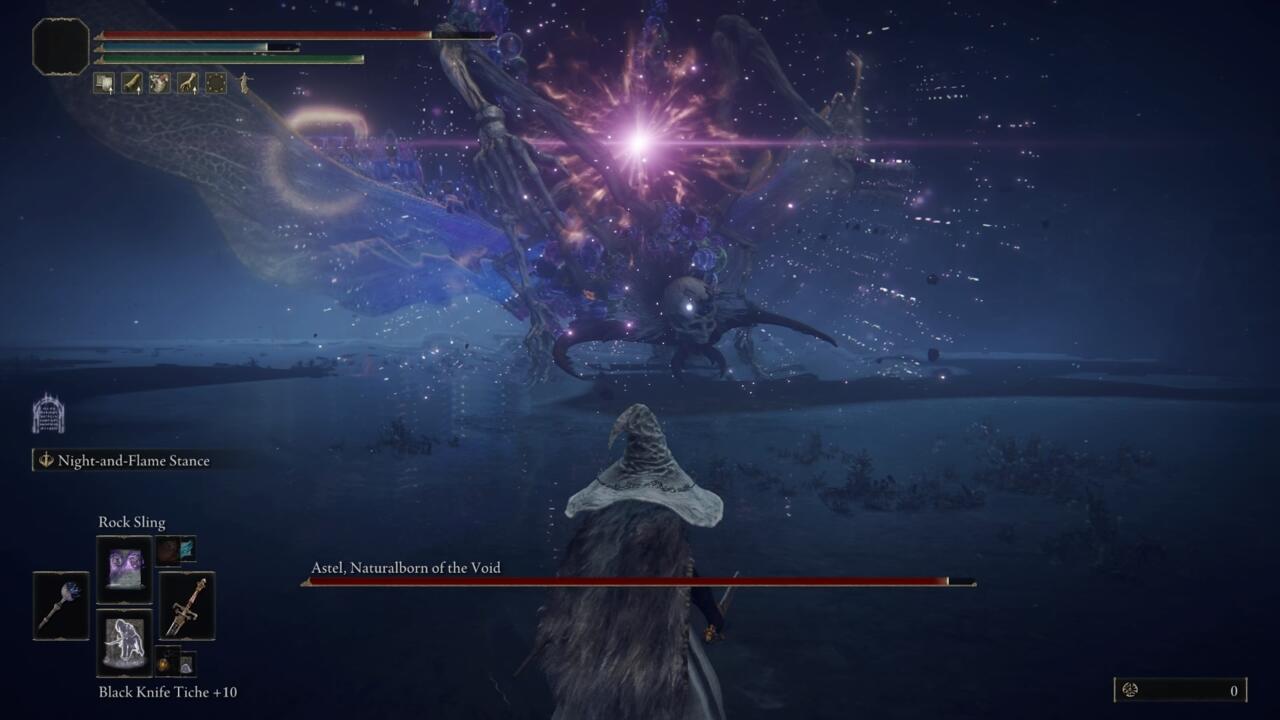
It seems the people of Nokron were never quite able to execute this plan, however, and the creation of the Fingerslayer Blade was itself “high treason” against the Greater Will. As mentioned, it’s not entirely clear what happened when, though–the Nox’s attempt to create a lord Mimic Tear could have happened at the same time as the creation of the Fingerslayer Blade, with both acts enraging the Greater Will, or it could just be the blade itself that led to the Greater Will’s reprisal. And the ultimate fate of Nokron, and whether it was also an act of the Greater Will, isn’t exactly clear, either.
When you explore Nokron, your time in the place ends with a fight against a huge beast called Astel, Naturalborn of the Void. From what we can tell about Astel from its Remembrance and the gear you can create from it, this creature is literally a living star, a cosmic horror from space that fell to the Lands Between, much like other creatures you’ve faced before. Astel’s Remembrance says it destroyed Nokron and “took away their sky,” and the fact that you still find Astel in the city suggests that this was the last thing to happen to Nokron. The Eternal Darkness spell says it was “the despair that brought about its ruin made manifest,” which suggests that the loss of the sky and stars were the downfall of Nokron. From that, we’re left to wonder if Astel was sent to the Eternal City by the Greater Will, or if Astel was summoned by the Nox themselves, perhaps accidentally or as a side-effect of the summoning that created the Silver Tears.
Just how the events played out is tough to say, with information lost to history. The people of the surface have attempted to find and explore the Eternal Cities, it seems; in the Siofra Aqueduct and Nokstella, for instance, you find pale undead-looking enemies called the Falling Hawk company. Ashes and gear you find related to these poor souls says they were slaves sent below to explore the Eternal Cities, but they ran out of supplies, eventually turning to burning the corpses of their dead to maintain light as they explored. They would never make it out of the Eternal Cities, and who knows how long they, or their descendants, have been trapped there.
The Prince of Death
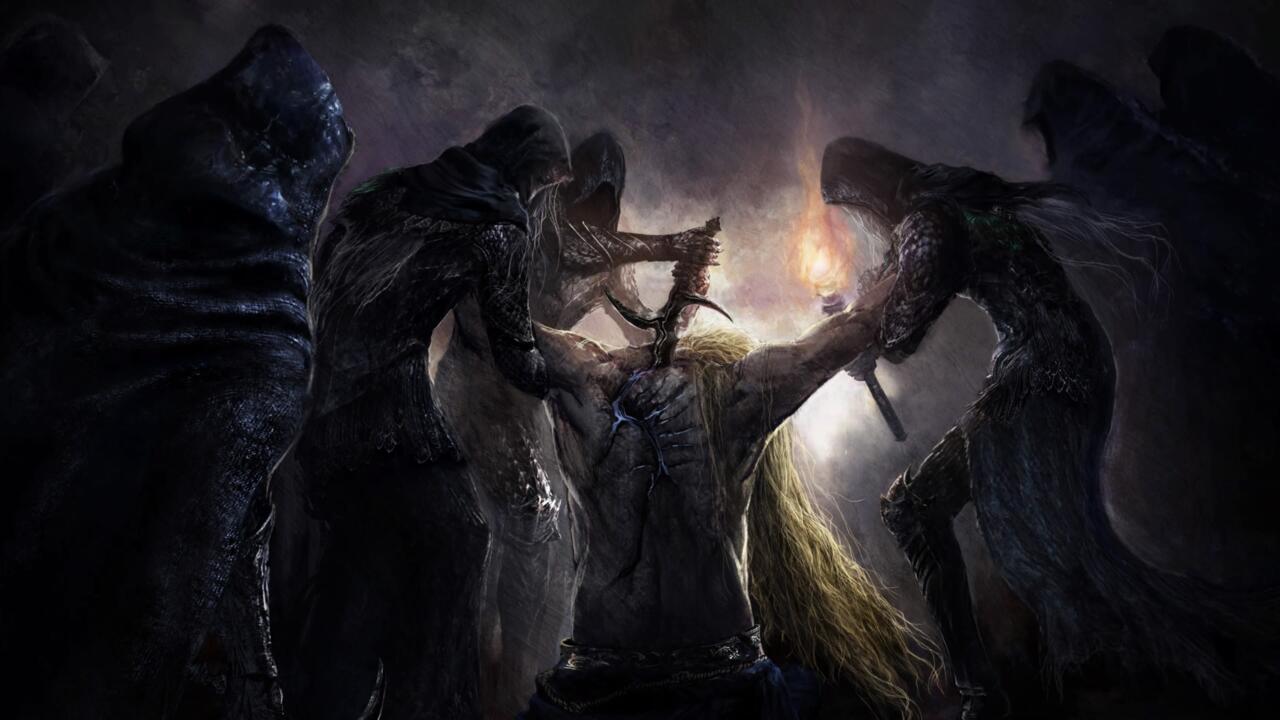
The pathway through Nokron and into the Siofra Aqueduct leads you to another section of the underground world of the Lands Between: the Deeproot Depths. This location is far below the Erdtree, where you can find many of its roots. You’ll quickly discover that some of them are rotted and corrupted, although they’re not suffering from the Scarlet Rot like the Haligtree is. Instead, they’re black and liquid, afflicted by something else: death itself.
If you make your way to the top of the Deeproot Depths, you’ll discover what’s infecting the Erdtree. A strange, twisted body has melded with the roots. What you find out, should you pursue more information through a few different sidequests, is that this is the body of Godwyn the Golden–now deformed and strange, like some kind of Eldritch terror. What remains of Godwyn is the Prince of Death, the source of Deathroot and Those Who Live in Death.
The story of Godwyn is a weird one, and it has had a major impact on the Lands Between. We’ve mentioned it a few times before, but here’s a quick rundown. Before the Shattering, a group of assassins, the Black Knives, managed to steal a piece of the Death Rune (which also goes by the name Destined Death), which Marika had removed from the Elden Ring, changing the way death worked in the Lands Between and creating a kind of immortality. After that, none of the demigods ever died; in fact, it seems like no one would die of natural causes in the Lands Between, and if they were killed, their souls would return to the Erdtree to live on. Destined Death was the natural way of the world and worked differently. It was indiscriminate, visiting regular people, demigods, and even gods, and bodies as well as souls could die, ceasing to exist.
So with Destined Death removed from the Elden Ring, no demigods had ever died in history. That changed on the Night of the Black Knives, when the assassins used their rune-infused knives to attack and kill Godwyn. But though they did murder Godwyn, what they killed was his soul. His body lives on as an empty husk, a sort of living death.
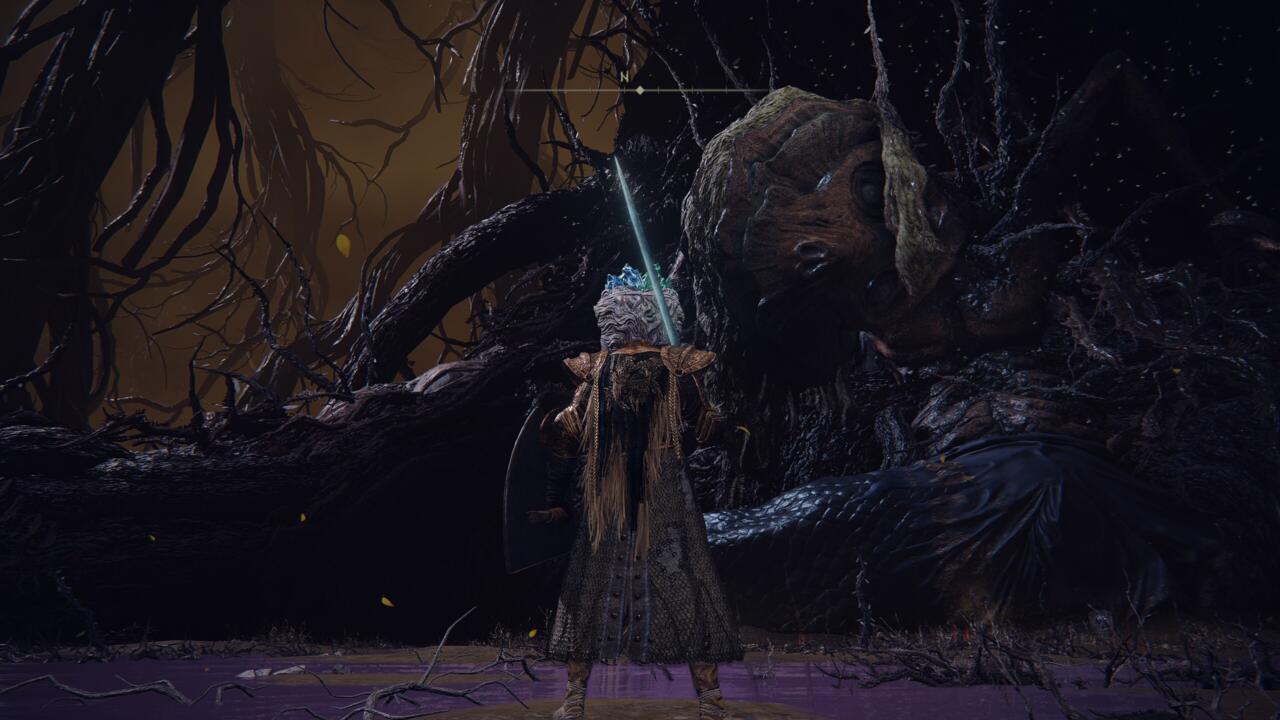
Tangled with the roots of the Erdtree, Godwyn’s undead body seems to be spreading corruption out into the land–you can see his eyes growing from roots and plants in various places throughout the Lands Between, and there’s even a whole second Godwyn face located far below Stormveil Castle. And that unnatural infection in the Lands Between created something new, a plant born of Godwyn’s corruption, called Deathroot.
The assassination itself is shrouded in mystery, although you can learn a lot about who the Black Knives were and are. We don’t know all the ins and outs of exactly why they did what they did, although there are a lot of theories. We do find out during the course of the game that the Black Knives worked directly with Ranni as part of her plan to free herself from the influence of the Greater Will and the Two Fingers. The assassination of Godwyn seems to have actually been a step necessary to get Ranni away from her Two Fingers. Destined Death kills both body and soul, but the Black Knives were able to split this effect–they killed Godwyn’s soul, not his body, and they killed Ranni’s body, but not her soul. Ranni was then able to transfer her spirit into the doll body you find her in during the game, and that seems to have gotten her out from under the Greater Will’s influence.
As for the Black Knives, there are a lot of tidbits related to who they are and why they might have helped Ranni. They’re described in the lore as a people called the Numen, of which Marika was one–and in fact, the Black Knives lore tells us the assassins, all women, were closely tied with Marika herself.
You can actually choose to be a Numen at the beginning of the game, when you’re creating your character, and on that screen, the Numen are described as coming from “another world.” That’s strange in and of itself, but if you talk to Rogier, a character you meet at Stormveil Castle, you can learn more about the assassins as he investigates what happened to Godwyn. Rogier tells you that it was said the women were “scions of the Eternal City.” If that’s the case, then Godwyn’s assassination could be an extension of the war between the Eternal Cities and the Greater Will. YouTuber Bandit has a great video delving into the Black Knives and the connection with Marika, the Eternal Cities, and Ranni–who Rogier tells us was actually behind the assassination itself. Ranni’s whole story is deserving of its own explanation, so we’ll skip it for now.
Hunting Those Who Live in Death
The assassination of Godwyn had a massive ripple effect throughout the Lands Between. It’s said that, in her grief at losing her first born and favorite child, Marika eventually would shatter the Elden Ring, although there seems to be a little more to it than that. Still, Godwyn’s death definitely was the catalyst that would eventually lead to the Shattering. Miquella would attempt to help his soulless brother, to no avail, while members of the Golden Order would start to seek out Those Who Live in Death and destroy them, seeing their impure existence as a defilement of the Erdtree.
That brings us back to Gurranq, the Beast Clergyman. You might have found in him in Caelid; if you interact with a character named D in Limgrave and help him slay some of Those Who Live in Death, he’ll send you Gurranq’s way to enlist your help in fighting the undead. Those Who Live in Death are created, apparently, by coming into contact with Deathroot, and although D believes them to be evil people whose souls refuse to return to the Erdtree, Rogier discovers the truth–people become undead through no fault of their own.
Gurranq, for his part, consumes Deathroot, and is seemingly even addicted to the stuff. He sees it as his duty to destroy Deathroot and Those Who Live in Death in an attempt to stomp out the corruption created by Godwyn. There’s a reason for that, which we’ll explore in greater detail in Crumbling Farum Azula.
Those Who Live in Death don’t choose to be that way, it seems, and there are those who hope to protect the undead. If you work your way through the quest of Fia, the Deathbed Companion, you’ll learn that she’s one of these people, hoping to stop the persecution of Those Who Live in Death. You can choose which side of the situation to be on, but it’s not clear what consequences there might be of helping the undead, or what the continued corruption of the Prince of Death might do to the Lands Between and the Erdtree itself. Maybe that’s something to be revisited in some future Elden Ring DLC, because there’s absolutely more going on with Godwyn than we’re aware of. You can even find his mutant fish face at the bottom of Stormveil Castle, as if it’s been drawn there through the roots of the Erdtree–and that definitely doesn’t seem good.
The Lord of Blood
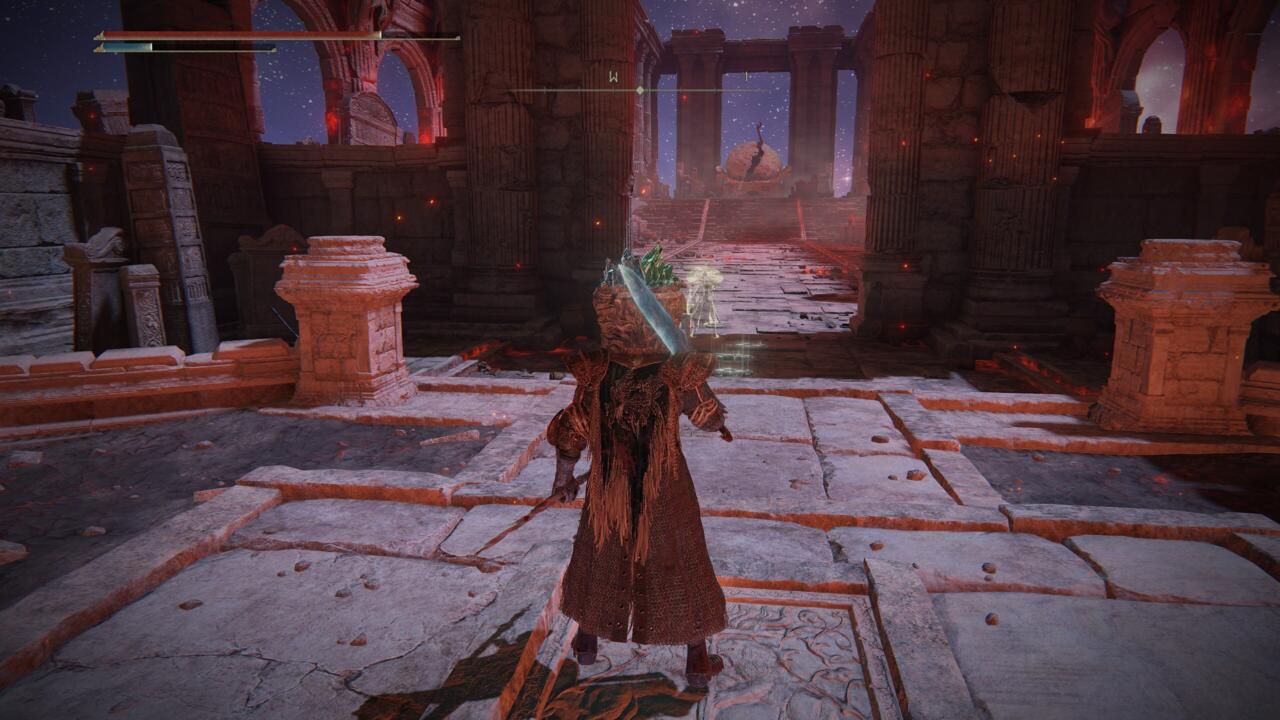
We briefly talked about Mohg, Lord of Blood during the Haligtree portion of the story. If you make your way through the teleporter in the Consecrated Snowfields, you’ll find Mohg’s domain–a bloody swamp with his mausoleum-slash-palace at the center. It turns out that this is also a portion of the underground region near the Eternal Cities, which suggests that Mohg probably didn’t build this place, but just moved in and took over when he decided to create the Mohgwyn Dynasty. You can make your way through here, facing corrupted red Albinaurics, festering creatures, cursed corpses of followers, and Mohg’s noble disciples. Enter the mausoleum at the center of the area, and you can take on Mohg himself to claim the last of the Great Runes and defeat the final Shardbearer.
Mohg’s story is a tragic and horrible one. You can first start to hear about the Lord of Blood in a bit of a roundabout way. White Mask Varre, one of the very first characters you interact with in the game, will eventually lead you to joining the followers of Mohg. Varre’s gear tells you that he was once a war surgeon during the Shattering, and suggests that maybe he had too much of a taste for hacking off limbs. Continue down Varre’s quest and he’ll send you to invade the games of other players to kill them; as with the followers of Rykard, murdering other Tarnished is close to Mohg’s heart.
Like Morgott, Mohg is an Omen child of Marika and Godfrey, and was kept in the sewers below Leyndell. Unlike Morgott, though, Mohg definitely didn’t feel a loyalty to his family or to the system that exacted such cruelty on him. At some point, he was visited by an Outer God called the Formless Mother, and his followers view this is as a sort of holy event. The Formless Mother granted Mohg power through blood and wounds and it seems like, for the first time, Mohg saw his Omen form as something positive, rather than a curse. When you fight Mohg, you even see him stabbing into the air with his trident, which is noted as a means of communing with the Outer God. What you’re seeing is literally Mohg stabbing into the Formless Mother to draw her blood and use her power.
The blood the Formless Mother granted, however, wasn’t all great–it was also a curse, burning within Mohg, which sounds like it was both painful and difficult to control. That’s why Mohg abducted war surgeons like Varre: to “tame the accursed blood.” The other surgeons failed, but Varre succeeded, it seems. With the bloody power of the Formless Mother, Mohg made his way out of the sewers and slipped into the location where you find him underground, biding his time and growing his power from there.
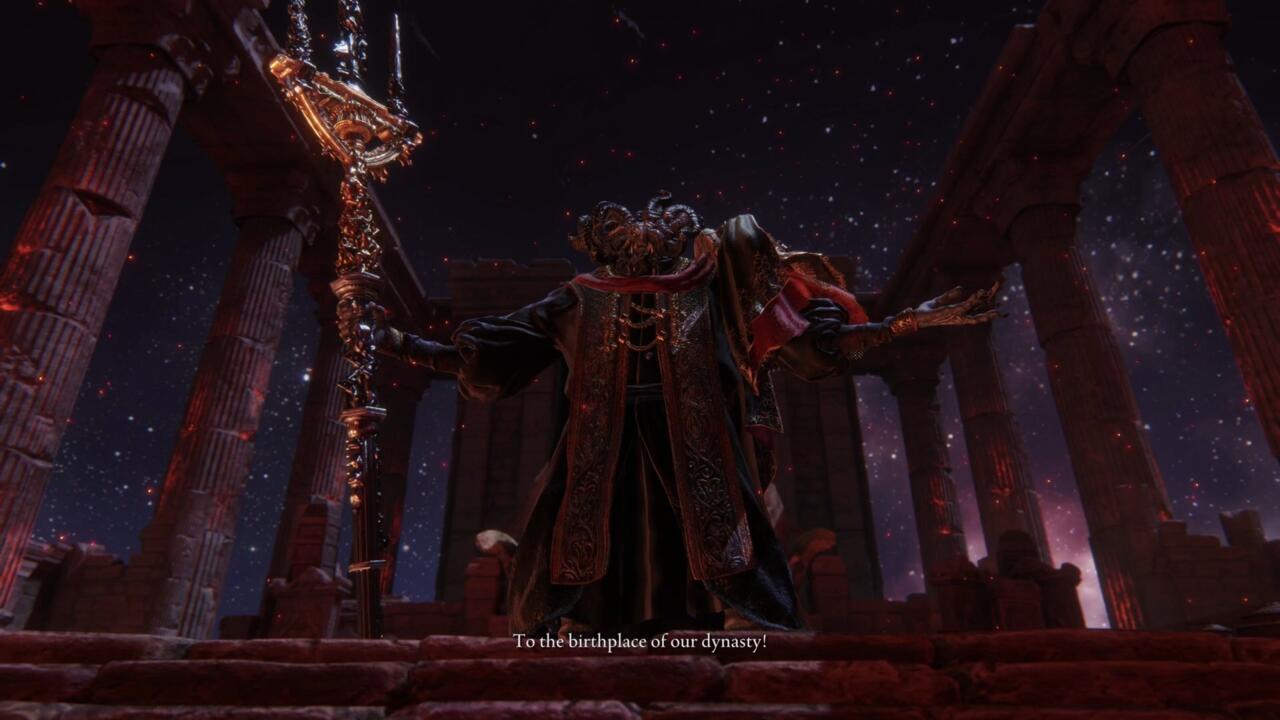
Varre gives an impression of how Mohg interacts with the world of the Lands Between, as he mostly seems to stay hidden in the shadows. Talking with White Mask Varre, he’ll tell you about the Roundtable Hold and give you information about the Guidance of Grace, but eventually he suggests that you shouldn’t trust the Two Fingers and that the other Tarnished are up to no good, as well. He guides you toward a different path, eventually enlisting you in Mohg’s service. There’s also a theory that the dead Finger Maiden you find early in the game should have been your maiden, and that she was killed by Varre; that’s how he knows from the start that you’re Maidenless. The idea, it seems, would be to mess up your ability to follow the path laid out for you by the Guidance of Grace and the Two Fingers, either to mess up the plans of the Greater Will, or, perhaps more likely, to subtly guide you toward joining up with Mohg.
During the Haligtree portion of this series, we talked about how Mohg kidnapped Miquella from his place within the Erdtree, but we didn’t discuss why. When you finally meet Mohg in his Mausoleum, you learn what he wanted: to become Miquella’s consort. Miquella is an Empyrean, and as such, he can become a god to replace Marika. The consort of a god becomes Elden Lord, like Godfrey and Radagon. Thus, we find out that Mohg’s goal isn’t to become a god himself–he can’t pull that off–but to use Miquella to gain the role of Elden Lord and rule the Lands Between that way. He wants to establish the Mohgwyn Dynasty as a new order, pushing out Marika and the other demigods and putting an end to the Golden Order and the control of the Greater Will.
Recall from our discussion of Miquella his ability to bewitch people, to force them to love him and, in that way, control them. It’s not clear if this was the case with Mohg, and it seems like, despite having Miquella and his cocoon, the Lord of Blood was never able to wake him up. So it’s unclear what might happen if Miquella ever awakens and ascends to godhood; not even Sir Gideon Ofnir is aware of what that would mean. In fact, Sir Gideon offhandedly considers destroying the cocoon and Miquella inside it to prevent that from happening. Even after you kill Mohg and claim his Great Rune, Miquella remains in the Mohgwyn Mausoleum, and we don’t know what might happen with him.
Felling Mohg marks the destruction of the final demigod, and the opportunity to claim the last of the Great Runes from the Shardbearers. That marks the end of all the demigods, save Miquella, who slumbers in his cocoon, and Ranni, who, as Sir Gideon says, “cast aside her Great Rune,” and thus isn’t one of your targets. There’s one last thing to claim: Destined Death. It waits for you in Crumbling Farum Azula, the final item before you can return to Leyndell and repair the Elden Ring.
The products discussed here were independently chosen by our editors.
GameSpot may get a share of the revenue if you buy anything featured on our site.
Stay connected with us on social media platform for instant update click here to join our Twitter, & Facebook
We are now on Telegram. Click here to join our channel (@TechiUpdate) and stay updated with the latest Technology headlines.
For all the latest Gaming News Click Here
